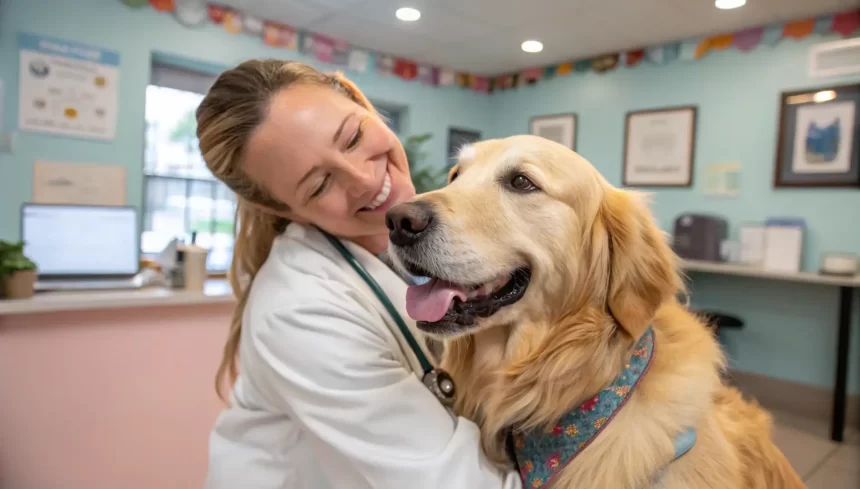Pets are more than just animals. They are members of the family. However, their health care can be expensive, especially when unexpected medical issues arise. Pet insurance can help you manage veterinary costs so your pets get the care they need without straining your budget. This article covers everything you need to know about pet insurance in the United States, including its history, major providers, reasons to invest in it, and tips for choosing the right policy.
What Is Pet Insurance?
Pet insurance is a type of insurance policy that covers veterinary expenses related to illnesses, injuries, and sometimes preventive care. It operates similarly to health insurance for humans, reimbursing a portion of your veterinary bills based on the coverage you select. By paying monthly premiums, pet owners can avoid high out-of-pocket expenses for treatments.
“Until one has loved an animal, a part of one’s soul remains unawakened.” Anatole France
Key Features of Pet Insurance:
Coverage: Pet insurance plans offer different levels of coverage to suit different needs. Here are the main types:
- Accident-Only Plans: These policies cover injuries resulting from accidents such as broken bones, cuts, or swallowing foreign objects. This insurance coverage is ideal for owners looking to protect their pet from unexpected events.
- Comprehensive Plans: These plans cover both accidents and illnesses. They are the most popular coverage among pet owners because they cover conditions such as infections, chronic illnesses, and even cancer treatments.
- Wellness Plans: These optional add-ons focus on routine and preventive care such as vaccinations, annual checkups, and dental cleanings.
Reimbursement Rate
Reimbursement rates usually fall between 70% and 90% of eligible veterinary costs. When buying a policy, you select this rate based on your financial preferences. A higher reimbursement rate means you’ll receive more money back after a claim, but it also increases your monthly premium. Conversely, a lower rate keeps your premiums affordable but requires you to cover a larger share of veterinary bills out-of-pocket.
Deductibles
Deductibles can vary by plan and are a key factor in determining your monthly premium. Options include:
- Annual Deductible: This is the amount you have to pay out of pocket for veterinary bills during the policy year before the policy kicks in. For example, if your annual deductible is $500, you will pay the first $500 of your pet’s veterinary bills each year.
- Per-Incident Deductible: This type of deductible applies to each separate medical condition or incident. For instance, if your dog requires treatment for two unrelated issues, you’ll pay a deductible for each incident before receiving reimbursement.
- Per-Condition Deductible: Used for ongoing treatments related to a single condition. If your cat develops a chronic illness like diabetes or requires ongoing treatment for ringworm, you’ll pay a deductible specifically for that condition, which may reset annually depending on the policy terms.
Exclusions
Most policies have specific exclusions, including:
- Pre-Existing Conditions: These are any health issues your pet had before the policy’s start date. For example, if your dog was diagnosed with arthritis before enrollment, treatment for arthritis won’t be covered.
- Cosmetic Procedures: These include surgeries or treatments that are not medically necessary, such as ear cropping, tail docking, or declawing.
- Breeding-Related Costs: Expenses related to intentional breeding, pregnancy, or birthing are usually excluded from coverage. This includes vet visits, cesarean sections, and neonatal care.
- Medications Not Covered: Some plans may not cover certain preventive medications, such as Heartgard, used to protect pets from heartworm disease. Always review your policy to understand which treatments and medications are excluded.
Why Do You Need Pet Insurance?
Rising Veterinary Costs: The cost of veterinary care in the United States is steadily increasing. According to the American Pet Products Association (APPA), Americans spent more than $35 billion on veterinary care in 2022. The costs of routine visits, surgeries, and emergency treatments can add up quickly.
Peace of Mind: Pet insurance ensures that you don’t have to make tough decisions based on financial constraints when your pet needs critical care.
Access to Better Treatment: With insurance, you can get advanced treatments and specialized care without worrying about the costs.
A Brief History of Pet Insurance
- 1890: The first pet insurance policy was issued in Sweden, focusing on farm animals.
- 1947: Pet insurance became popular in the UK.
- 1982: The first U.S. policy was issued for the famous television dog, Lassie.
Today, the pet insurance industry in the United States has grown significantly, with dozens of providers offering plans tailored to the different needs of pet owners.
Top Pet Insurance Companies in the U.S.
Here is a comparison of some of the most reputable pet insurance providers:
| Provider | Key Features | Average Monthly Cost | Reimbursement Options |
| Trupanion | No payout limits, direct vet payment option | $70-$100 | 90% |
| Healthy Paws | Unlimited lifetime benefits | $40-$60 | 70%, 80%, 90% |
| Nationwide | Coverage for exotic pets | $35-$75 | Multiple options |
| Embrace | Includes wellness plan add-ons | $30-$50 | 70%, 80%, 90% |
| ASPCA | Trusted brand with customizable plans | $30-$60 | Flexible |
Factors to Consider When Choosing Pet Insurance
1. Your Pet’s Breed and Age
Some breeds are more likely to suffer from certain health problems. For example, larger breeds like Great Danes may be prone to joint problems, while flat-faced breeds like Bulldogs often face respiratory problems. Knowing these risks can help you choose a policy that offers the right coverage. Additionally, older pets typically have higher premiums, and some insurers may limit coverage for older pets.
2. Coverage Needs
Think about what you want your insurance to cover. Do you just want protection for unexpected events, or do you want to cover conditions like diabetes or cancer? If you want routine care like vaccinations or dental cleanings, look for a policy with health coverage.
3. Budget
Your budget is a key factor. Balance the cost of your monthly premium with the amount of coverage you need. For example, a plan with a lower premium may have higher deductibles or less coverage, while more expensive plans can offer comprehensive benefits with minimal out-of-pocket costs.
4. Policy Details
Carefully review the fine print of each policy. Look for exclusions (e.g., pre-existing conditions), waiting periods before coverage starts, and how quickly claims are processed. A clear understanding of these details will help you avoid surprises when you need to file a claim.
How Does Pet Insurance Work?
- Enroll Your Pet: Find an insurance plan that suits your pet’s age, breed, and health history. Choose coverage that fits your budget and needs.
- Visit the Vet: Take your pet to the veterinarian whenever they need care, whether it’s for routine checkups or unexpected emergencies.
- Submit a Claim: Collect and submit detailed receipts and medical records from the vet visit to your insurance provider. Many companies now offer online or app-based claim submissions to make this easier.
- Get Reimbursed: Once the claim is approved, the insurance provider will send you reimbursement based on the coverage terms, such as the selected reimbursement rate and deductible.
Tips for Maximizing Pet Insurance Benefits
- Start Early: Enroll your pet while they are young to avoid pre-existing condition exclusions.
- Compare Plans: Use online tools to compare policies and read reviews.
- Understand the Fine Print: Before purchasing a plan, know what is covered and what is not.
Conclusion
Pet insurance is a valuable resource for pet owners in America. It provides you with financial protection and peace of mind, ensuring that your beloved animals receive the best possible care. By researching your options and choosing a plan that meets your needs, you can protect your pet’s health and your wallet.













